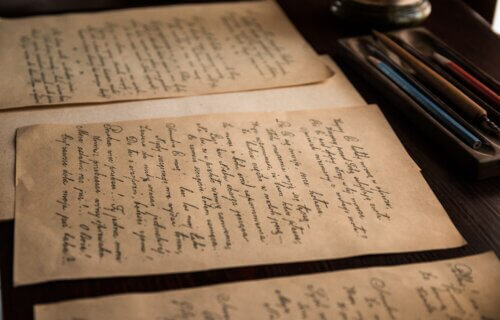LONDON — Codebreakers are finally revealing the secrets of Mary Queen of Scots’ lost letters — over 430 years after she wrote them in captivity. An international team found this treasure trove in a French library, allowing them to crack the coded letters, penned by Mary while she was imprisoned by her cousin Queen Elizabeth I and believed for centuries to have been lost.
Using computerized and manual techniques, the research team decoded the letters which show the challenges Mary faced maintaining links with the outside world, how the letters were carried and by whom. Key themes in Mary’s letters include complaints about her poor health and conditions in captivity, and her negotiations with Queen Elizabeth I for her release — which she believes were not conducted in good faith.
Codebreakers also say Mary clearly distrusted Elizabeth’s spymaster, Sir Francis Walsingham, and had a tremendous amount of animosity for Robert Dudley, Earl of Leicester and a favorite of Elizabeth. In the letters, Mary also expressed her distress when her son — James, the future King James I of England — was abducted in August of 1582.
George Lasry, a computer scientist and cryptographer, Norbert Biermann, a pianist and music Professor, and Satoshi Tomokiyo, a physicist and patents expert, discovered the letters while searching through the national library of France’s – Bibliothèque nationale de France’s (BnF) – online archives for enciphered documents.
Historians didn’t know Mary wrote these letters
The author was initially a mystery until the trio solved Mary’s highly sophisticated cipher system. Their decipherment work of 57 letters comes on the 436th anniversary of Mary’s execution, at the age of 44 at Fotheringhay Castle in Northamptonshire, and reveals around 50 new scripts previously unknown by historians.
Mary’s correspondences, written between 1578 and 1584, expose brand new insights into her captivity. She addressed most the letters to Michel de Castelnau de Mauvissière, the French ambassador to England. The diplomat was a supporter of Mary, a Catholic, who was in the Earl of Shrewsbury’s custody when she wrote the letters.
“Upon deciphering the letters, I was very, very puzzled and it kind of felt surreal,” says Dr. Lasry in a media release.
“We have broken secret codes from kings and queens previously, and they’re very interesting but with Mary Queen of Scots it was remarkable as we had so many unpublished letters deciphered and because she is so famous. This is a truly exciting discovery.”
“Together, the letters constitute a voluminous body of new primary material on Mary Stuart – about 50,000 words in total, shedding new light on some of her years of captivity in England,” Lasry continues. “Mary, Queen of Scots, has left an extensive corpus of letters held in various archives. There was prior evidence, however, that other letters from Mary Stuart were missing from those collections, such as those referenced in other sources but not found elsewhere.”
“The letters we have deciphered … are most likely part of this lost secret correspondence.”
Mary went to prison because of a royal power struggle
One of the 16th Century’s most famous historical figures, Mary was first in the line of succession to the English throne after her cousin Elizabeth. Catholics considered Mary to be the legitimate ruler, leading to Elizabeth imprisoning her for 19 years because of the threat to her monarchy. Mary was eventually executed for her alleged part in a conspiracy to kill Elizabeth.
During her time in captivity, researchers say Mary communicated with her associates and allies after recruiting secret messengers. Historians have been well aware of the existence of a confidential communication channel between Mary and Castelnau — as well as the English government at the time. However, the new discovery provides fresh evidence that this exchange was already in place by May 1578 and active for roughly six years.
Dr. Lasry and his colleagues described how they first came across the letters. Some were in a large set of unmarked documents in cipher, using the same set of graphical symbols. The BnF catalogue listed them as being from the first half of the 16th Century — saying that the letters had to do with “Italian matters.”
However, the team quickly realized they were written in French and had nothing to do with Italy after starting to crack the code. Their detective work revealed verbs and adverbs in the feminine form, several mentions of captivity, and the name “Walsingham,” which led to the researchers suspecting they came from Mary.
There may still be other letters from Mary out there
This fact was confirmed after comparing them with the text of letters in Walsingham’s papers in the British Library and through other methods. A search for similar letters in BnF collections unearthed 57 letters with the same cipher. Dr. Lasry and his colleagues suggest that other encoded letters from Mary may still be missing. A physical inspection of documents, as well as online searches, will be necessary to uncover them.
“In our paper, we only provide an initial interpretation and summaries of the letters. A deeper analysis by historians could result in a better understanding of Mary’s years in captivity,” Lasry concludes, who is also part of theDECRYPT Project involving several universities in Europe, with the goal of mapping, digitizing, transcribing, and deciphering historical ciphers.
“It would also be great, potentially, to work with historians to produce an edited book of her letters deciphered, annotated, and translated.”
The findings are published in the journal Cryptologia.
South West News Service writer Stephen Beech contributed to this report.

